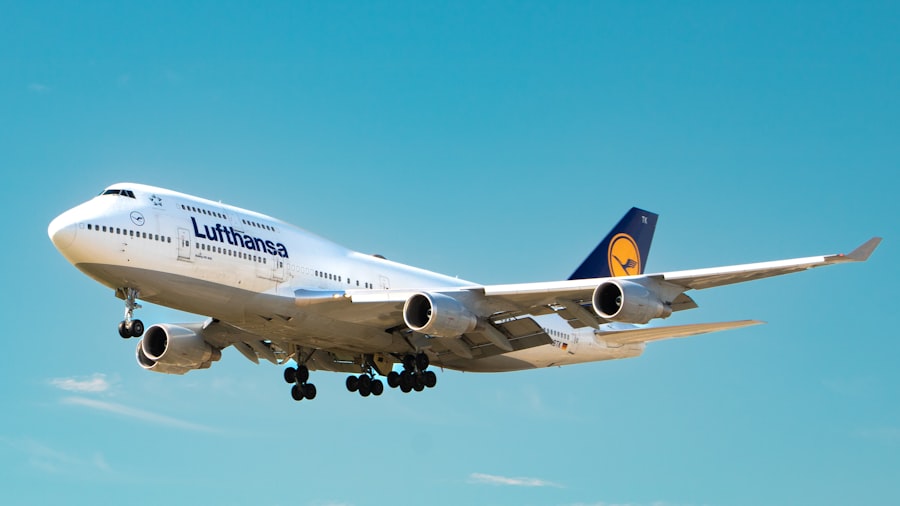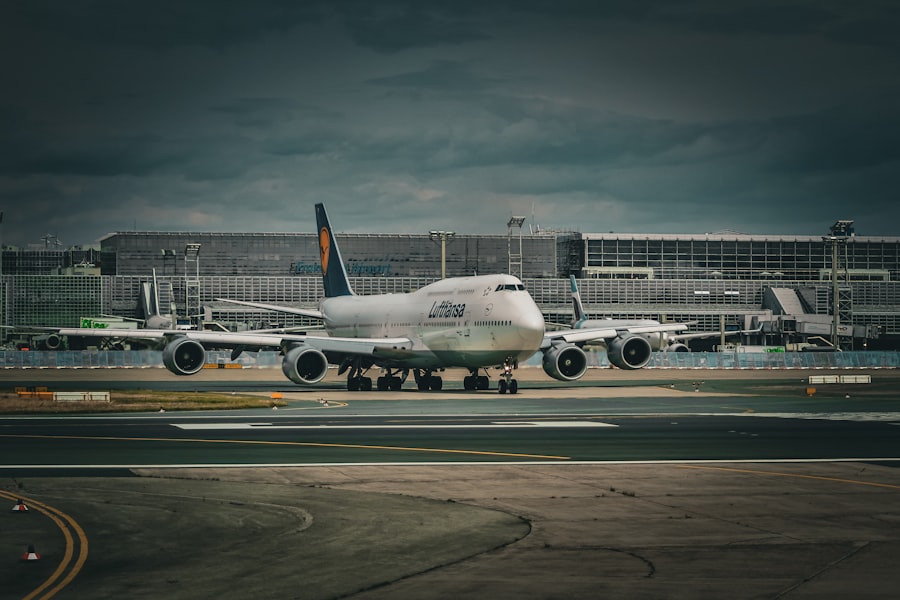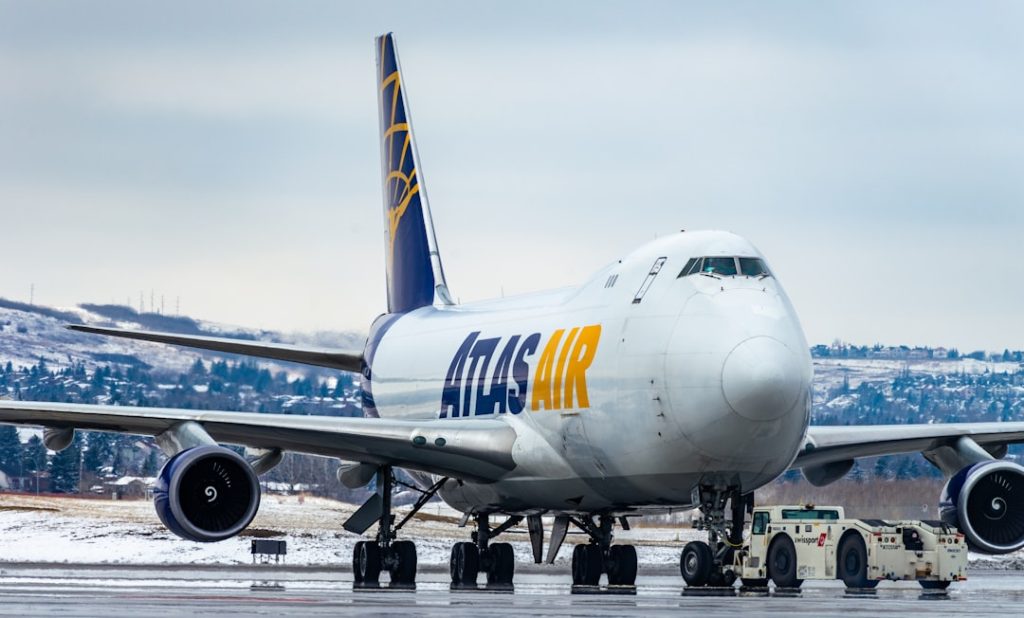The Boeing 747, often referred to as the “Jumbo Jet,” is one of the most iconic aircraft in the history of aviation. First introduced in 1970, this wide-body airliner revolutionized air travel by enabling airlines to transport a larger number of passengers over long distances at unprecedented speeds. With its distinctive humpbacked fuselage and four powerful engines, the 747 quickly became a symbol of modern air travel, representing both technological advancement and the democratization of flying.
The aircraft was designed by Boeing in response to the growing demand for air travel in the post-World War II era, a time when commercial aviation was beginning to take off in earnest. The development of the Boeing 747 was a monumental undertaking that involved thousands of engineers, designers, and workers. The aircraft’s design was groundbreaking, featuring a double-deck configuration that allowed for increased passenger capacity without compromising comfort.
The first model, the 747-100, could carry up to 400 passengers, a number that was staggering at the time. The introduction of the 747 not only changed the way people traveled but also had a profound impact on global trade and tourism, making it possible for more people to explore distant destinations than ever before.
Key Takeaways
- The Boeing 747, also known as the “Jumbo Jet,” revolutionized air travel when it was introduced in 1969, setting new standards for size, capacity, and range.
- The 747 had a significant impact on commercial aviation, making long-haul flights more accessible and affordable, and shaping the way airlines operated and competed in the market.
- Over the years, the Boeing 747 evolved with technological advancements, leading to the development of more efficient and advanced models, such as the 747-400 and the 747-8.
- The cultural and historical significance of the Boeing 747 is evident in its iconic design, its role in shaping global travel, and its use in historical events and popular culture.
- The Boeing 747’s influence on air travel and tourism is undeniable, as it opened up new possibilities for international travel and contributed to the growth of the global tourism industry.
The Impact of the Boeing 747 on Commercial Aviation
The Boeing 747’s impact on commercial aviation cannot be overstated. It fundamentally altered the landscape of air travel by making it more accessible and affordable for the average person. Prior to the introduction of the 747, air travel was often considered a luxury reserved for the wealthy.
However, with its ability to carry large numbers of passengers at lower operating costs per seat, airlines could offer more competitive fares. This shift opened up air travel to a broader demographic, allowing families and individuals to embark on journeys that were previously out of reach. Moreover, the 747 played a crucial role in expanding international routes and connecting cities across continents.
Airlines began to establish long-haul flights that linked major hubs around the world, facilitating not only tourism but also business travel and cultural exchange. The aircraft’s range and capacity made it possible for airlines to operate non-stop flights between cities that were once separated by vast distances. This connectivity fostered globalization, as people could now easily traverse borders for work or leisure, leading to an increase in international trade and collaboration.
The Evolution of the Boeing 747

Over the decades, the Boeing 747 has undergone several iterations and improvements, each model building upon the successes and lessons learned from its predecessors. The initial version, the 747-100, was soon followed by the 747-200, which featured increased range and payload capabilities. Subsequent models, such as the 747-300 and 747-400, introduced advanced technologies like more efficient engines and improved aerodynamics, further enhancing performance and fuel efficiency.
The 747-400, in particular, became one of the most popular variants due to its extended range and modern cockpit design. The latest iteration, the Boeing 747-8, represents a significant leap forward in terms of technology and design. Launched in 2011, this model features advanced wing designs that improve fuel efficiency and reduce noise levels.
It also boasts a larger passenger capacity, accommodating up to 660 passengers in a high-density configuration. The 747-8 incorporates state-of-the-art avionics and systems that enhance safety and operational efficiency. Despite these advancements, the essence of the Boeing 747 remains intact; it continues to embody the spirit of innovation that has defined its legacy since its inception.
The Cultural and Historical Significance of the Boeing 747
| Aspect | Details |
|---|---|
| First Flight | February 9, 1969 |
| Introduction | January 22, 1970 |
| Passenger Capacity | 366-524 passengers |
| Length | 231 ft 10 in (70.6 m) |
| Wingspan | 195 ft 8 in (59.6 m) |
| Maximum Takeoff Weight | 987,000 lb (447,700 kg) |
| Range | 7,260 nmi (13,420 km) |
| Significance | Revolutionized air travel, iconic design, cultural impact |
The Boeing 747 is not just an aircraft; it is a cultural icon that has left an indelible mark on history. Its introduction coincided with a period of significant social change in the late 20th century when air travel began to transform from an elite experience into a common mode of transportation. The aircraft became synonymous with adventure and exploration, inspiring countless individuals to embark on journeys across the globe.
Its presence in popular culture—featured in films, television shows, and literature—has solidified its status as a symbol of freedom and connectivity. Historically, the Boeing 747 has been involved in numerous significant events that have shaped global society. It served as Air Force One for U.S.
presidents, symbolizing power and authority while also representing American technological prowess. Additionally, during times of crisis or humanitarian need, such as natural disasters or refugee crises, modified versions of the 747 have been used for cargo transport and relief efforts. This versatility underscores its importance not only as a commercial airliner but also as a tool for diplomacy and humanitarian aid.
The 747’s Influence on Air Travel and Tourism
The influence of the Boeing 747 on air travel and tourism is profound and multifaceted. By enabling airlines to offer more affordable fares through increased capacity, it has made international travel accessible to millions who would otherwise never have had the opportunity to explore foreign lands. Destinations that were once considered remote or exotic have become commonplace vacation spots for travelers from all walks of life.
This democratization of air travel has led to an explosion in global tourism, with countries around the world benefiting economically from increased visitor numbers. Furthermore, the Boeing 747 has played a pivotal role in shaping travel trends and preferences. Its ability to operate long-haul flights has made it possible for travelers to visit multiple countries in a single trip or take vacations that span continents.
The rise of low-cost carriers utilizing older models of the 747 has further expanded travel options for budget-conscious consumers. As a result, destinations that were once overlooked are now thriving tourist hotspots, contributing to local economies and fostering cultural exchange.
The Legacy of the Boeing 747 in Popular Culture

The legacy of the Boeing 747 extends beyond its technical achievements; it has also made a significant impact on popular culture. The aircraft has been featured prominently in films such as “Airport” (1970), which showcased its grandeur and capabilities while dramatizing the challenges faced by airlines during turbulent times. This film not only highlighted the aircraft’s role in commercial aviation but also captured the imagination of audiences worldwide, cementing its status as an icon.
Television shows have also embraced the Boeing 747 as a symbol of adventure and exploration. Series like “Pan Am” romanticized air travel during the golden age of aviation, showcasing flight attendants and pilots navigating glamorous routes aboard this majestic aircraft. Additionally, documentaries exploring aviation history often highlight the Boeing 747’s contributions to both technology and society, further embedding it into the cultural consciousness as a representation of human ingenuity.
The Future of the Boeing 747
As we look toward the future, the Boeing 747 faces challenges amid evolving market dynamics and environmental concerns. With increasing emphasis on sustainability and fuel efficiency in aviation, newer aircraft models are being developed with advanced technologies that promise lower emissions and reduced operational costs. Airlines are increasingly investing in twin-engine jets that can offer similar capacities while being more economical to operate.
Despite these challenges, there remains a dedicated following for the Boeing 747 among aviation enthusiasts and certain airlines that continue to operate this iconic aircraft. Its unique design and historical significance ensure that it will always hold a special place in aviation history. While production may be winding down—Boeing announced that it would cease production of the 747-8—its legacy will endure through its contributions to commercial aviation and its role in shaping global connectivity.
The Enduring Legacy of the Boeing 747
The Boeing 747 stands as a testament to human innovation and ambition within aviation history. Its introduction marked a turning point in commercial air travel, making it accessible to millions while reshaping global tourism and trade dynamics. As we reflect on its evolution over more than five decades—from its groundbreaking design to its cultural significance—the impact of this remarkable aircraft is undeniable.
While newer models may take center stage in modern aviation, the legacy of the Boeing 747 will continue to inspire future generations as they look skyward toward new horizons.


